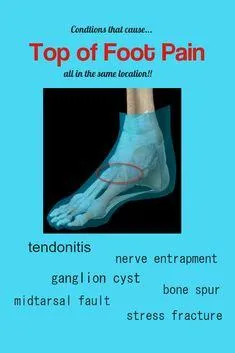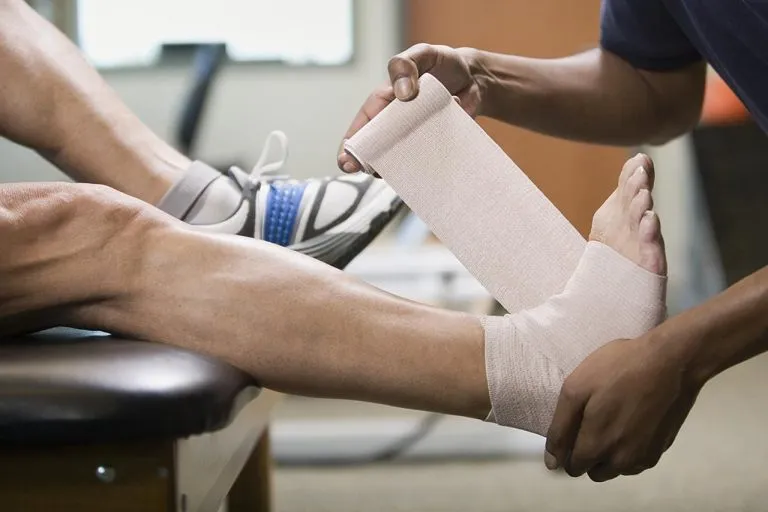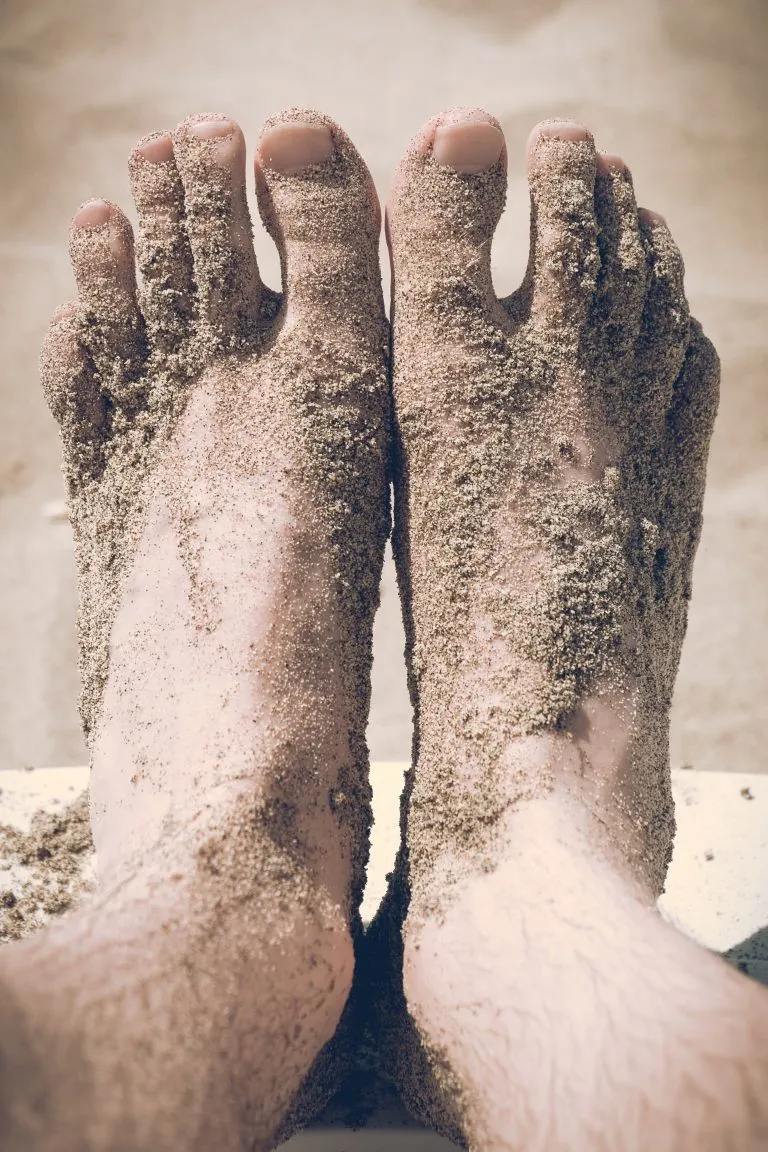Foot Problems – Charcot Foot
Charcot Foot is a pattern of bone and joint destruction that can lead to severe foot deformities. This disease begins with peripheral neuropathy (decreased feeling in the feet), most commonly seen in diabetics.
People with decreased nerve sensation may injure their feet, producing small fractures in the bones; and because they have decreased feeling, they may have minimal or no pain, and they continue walking on the foot. This causes the bones to heal unevenly, causing the foot to become deformed.
Treatments: The acute, or early symptoms of Charcot Foot are: small fractures of the bones of the foot, swelling over these areas, and later the entire foot may become swollen and inflamed
There is little if any pain during this stage. Treatment during this stage is imperative and includes complete rest of the foot by using a non-weight bearing cast, crutches, and bed rest. If treatment is not initiated, this disease progresses to its chronic stage.
During this stage the following symptoms may be present: a foot that is deformed, and noticeably different than the other foot; a collapsed arch; bones that abnormally protrude against the skin, possibly causing the skin to breakdown and ulcerate; swelling and inflammation of the foot; and there may be no pain present, or in some patients, the pain is intense, due to the amount of bone and joint destruction present.
Treatment during this stage involves non-weight-bearing casts until the swelling subsides, physical therapy, and custom-made shoes and orthotics.
The Basics of Charcot Foot Diagnosis
Learn about Charcot Foot – how it is diagnosed, what its symptoms are, and how to prevent it. In this article, you’ll discover the basics of Charcot foot diagnosis. Before you learn how to cure this painful condition, understand its causes. Read on for helpful tips! Before getting started with treatment, know the symptoms of Charcot foot so you can treat it before it gets out of hand. There is a cure for Charcot foot – here are some ways you can get one.
Treatment
The first step of Charcot Foot treatment is offloading and rest. This is important because the feet and ankles are extremely fragile and injury can lead to inflammation and deformity. In addition, offloading prevent the deformity from progressing. In some cases, weight-bearing is restricted for several months to prevent further damage and deformity. Surgical correction of the condition may be necessary. To learn more about Charcot Foot treatment, read on.
Surgery may be required in some cases. The doctor may remove a portion of the bone, lesion, or bump. The bone may be realigned and the ankle fused. If all else fails, surgery may be needed to repair the foot. Some Charcot foot patients may require amputation. The best treatment option depends on the severity of the condition and the individual’s specific needs. Charcot foot treatment may not be as complex as many people think.
Diagnosis
The clinical picture of Charcot Foot can be confusing. The same features can be present in both conditions, such as soft tissue edema and bone marrow edema. The degree of signal loss in T1 sequences can also be similar in both entities. An MRI can be used to identify coexisting conditions, such as a prior traumatic event or surgery on the foot. If a patient has any of these symptoms, they should see a doctor for an accurate diagnosis.
The treatment of Charcot Foot depends on the severity of the condition. While it is usually curable with a fracture boot or cast, severe cases may require reconstructive surgery to realign the foot and prevent a further breakdown in the skin. In severe cases, an amputation may be necessary. To avoid the amputation of a limb, patients should seek medical care from a Certified Foot and Ankle Specialist. These doctors are experts in the diagnosis and treatment of Charcot’s foot.
Symptoms
The most common Charcot Foot symptoms include a red, swollen foot. Symptoms may be present without any obvious injury. The foot may feel warmer than the surrounding skin and unaffected foot. A tight Achilles tendon may increase the chances of developing Charcot foot. A non-specialist physician may only encounter Charcot foot once or twice in their entire career. A diagnosis should be made as early as possible because Charcot’s foot is difficult to detect in its early stages.
Treatment for Charcot’s foot begins with offloading and rest. Offloading the foot reduces inflammation and the potential for deformity. Protected weight-bearing is the best way to prevent complications and amputation of the foot. Treatment may include orthotics. But in many cases, this treatment will be ineffective. In some cases, surgical intervention may be necessary. It is important to consult a medical professional to get an accurate diagnosis.
Prevention
Prevention of Charcot’s foot requires a lifelong program of proper foot care. Charcot foot patients may be prescribed custom-made shoes or orthotic inserts. In severe cases, bracing or surgery may be required. Increasing blood glucose levels is another effective strategy to reduce the progression of nerve damage in the feet. Regular foot exams should also be performed to detect swelling and pain. Patients must also replace orthotic shoes annually. Patients should report any tingling or pain in their feet.
Early diagnosis is essential in the prevention of Charcot’s foot. If detected at an early stage, treatment can be conservative and low-tech. In severe cases, surgery is recommended. Surgical treatment may be necessary to correct the condition but should be reserved for patients whose condition cannot be managed nonsurgically. In most cases, a regimen of daily care can prevent recurrent ulcerations. After the foot heals, patients may be able to resume some weight-bearing
Prevention of Charcot Foot:
Anyone who has peripheral neuropathy, especially diabetics, should be treated with custom-made orthotics to help guard the feet against injuries; to support the bones and joints of the feet, thus preventing deformities from occurring; and to protect the bottom of the feet from friction, calluses, and ulcers of the skin.
The special custom-made orthotics are made out of comfortable, long-lasting, space-age materials.
Examine your feet daily including the tops, bottoms, and between your toes. Look for inflamed areas, cuts, peeling and breaks in the skin, rashes, and swelling.
Press on your nail to see if they are painful or ingrown. Touch your feet and make sure the temperature is the same in both, and that they are not cooler than the rest of your body. Test to see that you have a good feeling in the bottom of both feet, by gently moving your finger from heel to toes.
If any of the above is abnormal, see a podiatrist immediately. Wear properly fitted shoes, with uppers made of soft materials, the toe box (the area where the toes lie in the shoe) should be deep and wide to reduce pressure on the toes, and the heels should be no higher than 3/4 inch.
Seamless socks and shoes cause fewer problems than those with seams. Always wear shoes and socks; they protect the feet from injury. Do not walk barefoot.







